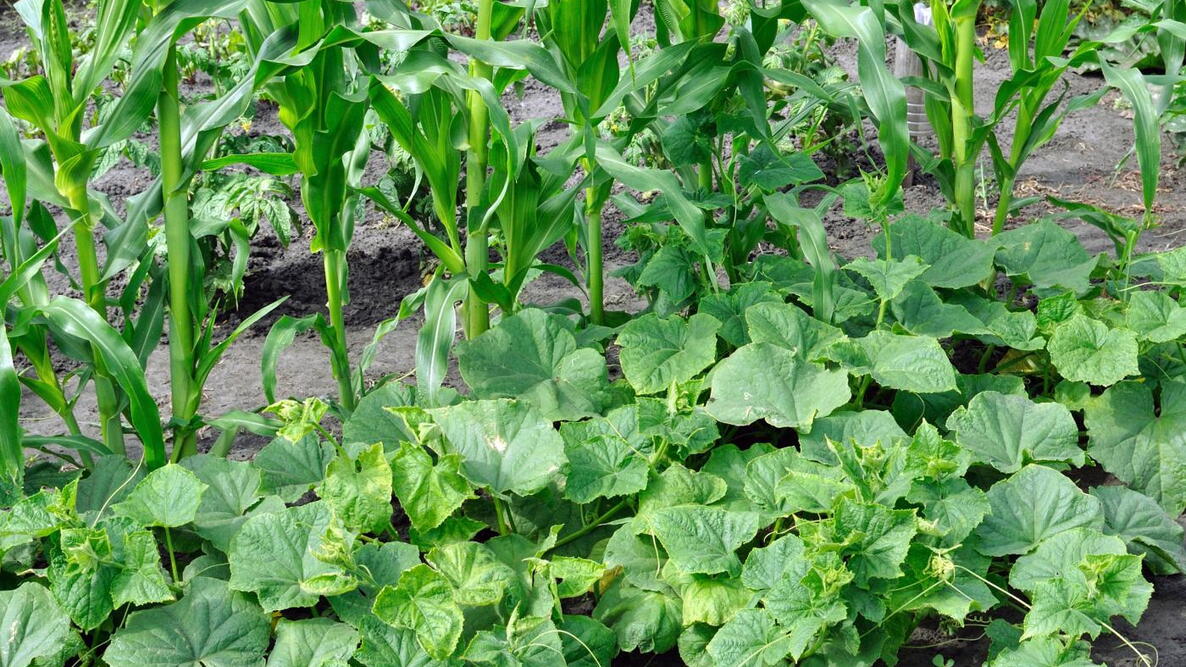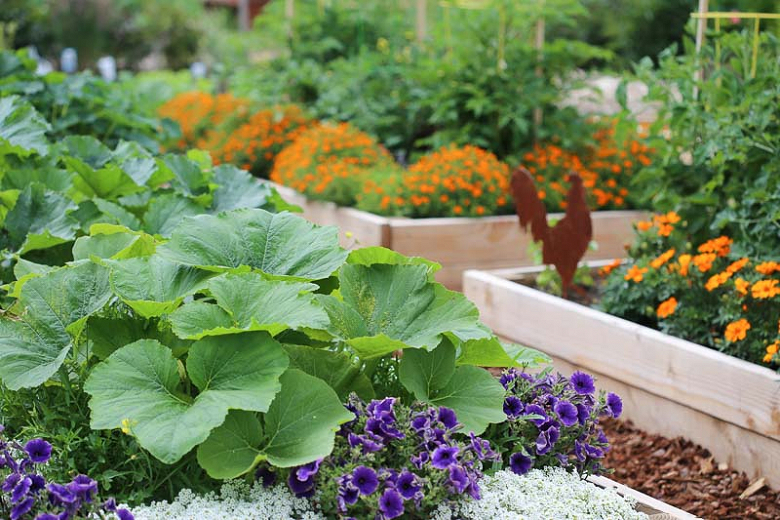The Ultimate Guide To Companion Planting: Grow Better Vegetables With The Power Of Plant Partnerships
The Ultimate Guide to Companion Planting: Grow Better Vegetables with the Power of Plant Partnerships
Companion planting is a gardening practice that involves planting certain types of plants together to benefit each other. This can be done to attract beneficial insects, repel pests, improve soil health, or increase yields.
There are many different benefits to companion planting. Some of the most common include:
- Increased yields: Companion planting can help to increase yields by attracting beneficial insects, which help to pollinate crops and control pests. It can also help to improve soil health, which can lead to healthier plants and higher yields.
- Improved flavor: Some companion plants can actually improve the flavor of other plants. For example, planting basil near tomatoes can help to enhance the tomato's flavor.
- Reduced pest pressure: Companion planting can help to reduce pest pressure by attracting beneficial insects that prey on pests. For example, planting marigolds near tomatoes can help to repel nematodes, which are a common pest of tomatoes.
- Improved soil health: Companion planting can help to improve soil health by attracting beneficial microorganisms that help to break down organic matter and improve nutrient availability. For example, planting legumes, such as peas and beans, can help to fix nitrogen in the soil, which is a nutrient that is essential for plant growth.
If you are interested in trying companion planting, there are a few things you need to keep in mind. First, you need to choose the right plants to grow together. There are many different resources available that can help you to find compatible companion plants.
Second, you need to plant your plants in the right location. Some companion plants need full sun, while others prefer partial shade. You also need to make sure that your plants have enough space to grow.
Finally, you need to be patient. Companion planting takes time to work. You may not see the benefits immediately, but over time, you will likely see an improvement in your garden.
Here are some of the most common companion plants:
- Beans and peas: These legumes fix nitrogen in the soil, which is a nutrient that is essential for plant growth. They also attract beneficial insects, such as ladybugs and hoverflies, which help to control pests.
- Carrots and onions: These plants repel each other's pests, so they are a good choice to plant together. Carrots also benefit from the presence of onions, as onions help to repel carrot fly.
- Cucumbers and melons: These plants have similar growing requirements, so they can be planted together. They also attract beneficial insects, such as bees and wasps, which help to pollinate the flowers.
- Lettuce and tomatoes: Lettuce helps to suppress weeds, while tomatoes provide shade for lettuce. They also attract beneficial insects, such as ladybugs and hoverflies, which help to control pests.
- Marigolds and tomatoes: Marigolds help to repel nematodes, which are a common pest of tomatoes. They also attract beneficial insects, such as ladybugs and hoverflies, which help to control pests.
These are just a few of the many companion plants that you can grow together. With a little research, you can find the perfect companion plants for your garden.
Are you looking for a way to improve your garden's productivity and health? If so, you should consider companion planting. Companion planting is the practice of planting certain plants together to benefit each other. For example, some plants attract beneficial insects that help to control pests, while others deter pests from attacking your crops.
If you're new to companion planting, you may be wondering where to start. A great resource is Gardenia Inspiration. This website has a comprehensive guide to companion planting, as well as information on specific plant pairings. You can also find articles on other gardening topics, such as how to attract pollinators and how to build a raised bed.
FAQ of guide to companion planting
What is companion planting?
Companion planting is a gardening practice that involves planting certain plants together to benefit each other. This can be done to attract beneficial insects, repel pests, improve soil quality, or simply to create a more attractive garden.
What are the benefits of companion planting?
There are many benefits to companion planting, including:
- Increased yields: Companion planting can help to increase the yields of your crops. For example, planting marigolds near tomatoes can help to repel pests that damage tomatoes, resulting in a higher yield of tomatoes.
- Improved soil quality: Companion planting can help to improve the soil quality in your garden. For example, planting legumes (such as beans and peas) can help to fix nitrogen in the soil, which can benefit other plants in the garden.
- Attracted beneficial insects: Companion planting can help to attract beneficial insects to your garden. These insects can help to control pests, pollinate your plants, and improve the overall health of your garden.
- Repelled pests: Companion planting can help to repel pests from your garden. For example, planting marigolds near tomatoes can help to repel nematodes, which can damage tomatoes.
- Created a more attractive garden: Companion planting can also help to create a more attractive garden. For example, planting flowers among your vegetables can add color and interest to your garden.
What are some good companion plants?
There are many good companion plants, but some of the most popular include:
- Tomatoes and basil: Basil helps to repel aphids and other pests from tomatoes, and it also improves the flavor of tomatoes.
- Beans and peas: Beans and peas fix nitrogen in the soil, which can benefit other plants in the garden. They also benefit from being planted near corn, as the corn provides them with support.
- Carrots and onions: Carrots and onions repel each other's pests, so they make good companion plants.
- Cucumbers and melons: Cucumbers and melons benefit from being planted near tall plants, such as corn or sunflowers, which provide them with support.
- Marigolds and nasturtiums: Marigolds and nasturtiums repel many pests, so they are good companion plants for many different vegetables.
What are some bad companion plants?
There are a few plants that should not be planted together, as they can compete for resources or even harm each other. Some of the most common bad companion plants include:
- Beans and potatoes: Beans and potatoes can both attract the same pests, so it is best to avoid planting them together.
- Carrots and parsnips: Carrots and parsnips have similar root systems, so they can compete for resources if planted together.
- Cucumbers and tomatoes: Cucumbers and tomatoes can both attract the same pests, so it is best to avoid planting them together.
- Peas and onions: Peas and onions can both repel each other's beneficial insects, so it is best to avoid planting them together.
What should I do while waiting for plants to grow?
While waiting for your plants to grow, there are a few things you can do to keep your garden healthy and productive. These include:
- Watering: Keep your plants well-watered, especially during dry periods.
- Weeding: Weed regularly to prevent weeds from competing with your plants for resources.
- Mulching: Mulch around your plants to help retain moisture and suppress weeds.
- Monitoring: Monitor your plants for pests and diseases, and take action as needed.
Image of guide to companion planting
- Image 1: A diagram of a garden with different vegetables and herbs labeled. The labels indicate which plants are beneficial to each other, such as tomatoes and basil, or carrots and onions.

- Image 2: A photo of a bed of carrots with a row of nasturtiums planted in front of them. The caption of the photo reads "Nasturtiums deter carrot flies."

- Image 3: A photo of a tomato plant with a basil plant growing at its base. The caption of the photo reads "Basil attracts beneficial insects that help to control pests."
- Image 4: A photo of a bed of corn with a row of beans planted in between the corn stalks. The caption of the photo reads "Beans fix nitrogen in the soil, which benefits the corn."

- Image 5: A photo of a flower garden with a variety of flowers and herbs. The caption of the photo reads "Flowers attract pollinators, which help to pollinate vegetables."

Post a Comment for "The Ultimate Guide To Companion Planting: Grow Better Vegetables With The Power Of Plant Partnerships"